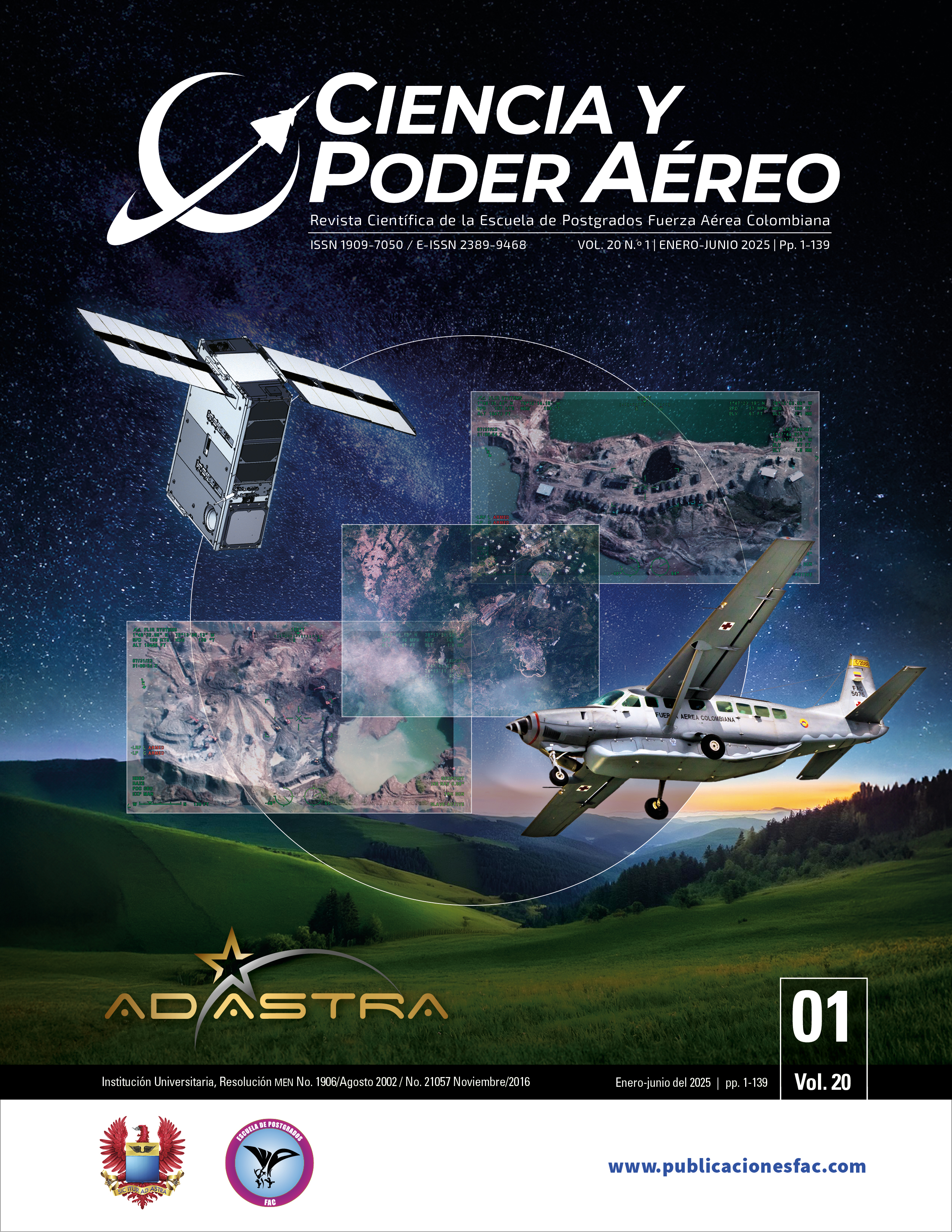Air Intelligence in support of the interdiction of aircraft linked to drug trafficking
DOI:
https://doi.org/10.18667/cienciaypoderaereo.787Keywords:
Unidentified Traffics, Operational Air Intelligence, Command and control centersAbstract
The actions of the narco-criminal organizations that operate internationally have permeated the security of the Ecuadorian State and violated, on several occasions, its sovereignty. Since 2003 there have been some incidents with illegal aircraft linked to drug trafficking, the same ones that enter Ecuador by air. This phenomenon has caused the Armed Forces to intervene directly through the execution of military operations in the internal sphere, where the Air Force maintains the responsibility of exercising surveillance and control of airspace. In this regard, the operational effort has been oriented towards the detection, identification, interdiction and intervention of Unidentified Traffics (UT) that, taking advantage of the national aeronautical infrastructure, intend to carry out their illegal activities in Ecuadorian territory. For this purpose, the operational level has seen the need to complement the air operations carried out by the Immediate Reaction Force (IRF), with useful and timely information provided by the Operational Air Intelligence system. To obtain this input, it has been proposed to divide the intelligence work into phases, in order to identify and intervene in the critical requirements presented by the narco-criminal organizations to carry out drug trafficking by air. The success stories increased from 2018, when the proposal developed in this article was implemented.
Downloads
References
Avilés Farre, J. (2005). Las amenazas globales del siglo XXI. Arbor, 180(708), 247-268. https://doi.org/10.3989/arbor.2005.i709.506 DOI: https://doi.org/10.3989/arbor.2005.i709.506
Beliz, G. (2012). Gobernar la seguridad ciudadana en América Latina y el Caribe: amenazas, desafíos y nudos estratégicos de gestión. Banco Interamericano de Desarrollo. http://dx.doi.org/10.18235/0007623 DOI: https://doi.org/10.18235/0007623
Comisión Económica para América Latina y el Caribe (CEPAL). (2022). Base de datos y publicaciones estadísticas [en línea]. https://statistics.cepal.org/portal/cepalstat/dashboard.html?theme=3&lang=es
Fuerza Aérea Ecuatoriana (FAE). (2020). Manual de Instrucción de Planificación por Capacidades. FAE.
Gallardo-Castañeda, M. (2019). Riesgos y amenazas para la seguridad multidimensional. Transformaciones estratégicas globales, retos y repercusiones (Academia de Guerra Ejército de Chile, ed.; pp. 65-83). Centro de Estudios Estratégicos. CEEAG.
Oficina de las Naciones Unidas Contra la Droga y el Delito (UNODC). (2020). Informe Mundial sobre las Drogas 2020 [en línea]. https://wdr.unodc.org/wdr2020/index2020.Html
Organización de las Naciones Unidas (ONU). (2004, 2 de diciembre). Asamblea General: Quincuagésimo noveno periodo de sesiones. A/59/565 [en línea]. https://documents.un.org/doc/undoc/gen/n04/602/34/pdf/n0460234.pdf
World Economic Forum (WEF). (2022, 11 de enero). The Global Risks Report 2022 [en línea]. https://www.weforum.org/publications/global-risks-report-2022/
Downloads
Published
Issue
Section
Categories
License
Copyright (c) 2024 Escuela de Postgrados de la Fuerza Aérea Colombiana

This work is licensed under a Creative Commons Attribution 4.0 International License.
Assignment of Copyrights
Authors assign Ciencia y Poder Aéreo journal the exclusive rights (reproduction, distribution, public communication, and transformation) to exploit and commercialize their work, in whole or in part, in all the formats and modalities of present or future exploitation, in all languages, throughout the life of the work and throughout the world.
All contents published in Ciencia y Poder Aéreo journal are licensed under a Creative Commons Attribution 4.0 International License, whose complete information is available at http://creativecommons.org/licenses/by/4.0/
Under the terms of this license, users are free to download, print, extract, archive, distribute and publicly communicate the content of articles, provided that proper credit is granted to authors and Ciencia y Poder Aéreo, scientific journal of the Graduate School of the Colombian Air Force. Except when otherwise indicated, this site and its contents are licensed under a Creative Commons Attribution 4.0 International License.
For other uses not considered under this license it is required to contact the Director or the Editor of the journal at the e-mail address cienciaypoderaereo1@gmail.com.
The Graduate School of the Colombian Air Force and this publication are not responsible for the concepts expressed in the articles, including the metadata or the affiliation stated by authors. This is the full responsibility of the authors.






















